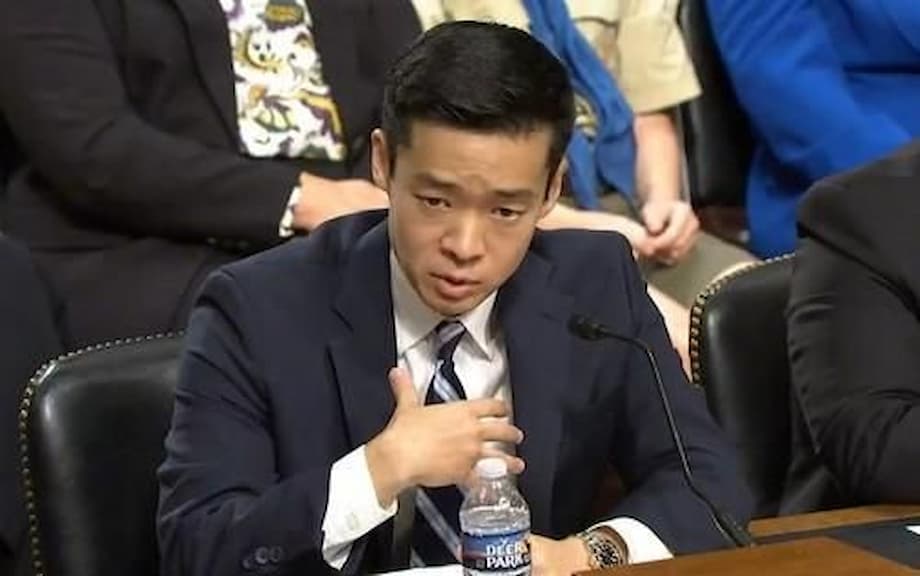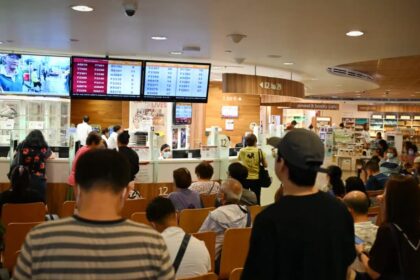Why this matters now
A senior Pentagon official has told Congress that many of South Korea’s most advanced military capabilities can help deter China, sharpening a debate over how the United States and its closest allies should share risk and responsibility in the Indo Pacific. John Noh, the deputy assistant secretary of war for East Asia and the nominee to serve as assistant secretary of defense for Indo Pacific security affairs, argued in written answers to the Senate Armed Services Committee that China poses the most serious military threat in the region. He urged allies to raise defense spending, strengthen critical capabilities, and assume a larger role in regional security while South Korea continues to lead conventional deterrence against North Korea.
- Why this matters now
- What South Korea brings to dual deterrence
- US Forces Korea and strategic flexibility
- Yellow Sea friction and gray zone pressure
- Alliance modernization under debate
- Risks on the peninsula during a Taiwan crisis
- Economics and technology as deterrence tools
- What Washington wants from Seoul next
- At a Glance
His message reflects a broader shift in US planning, which now prioritizes combat credible forces forward in the Pacific, modernized posture, and advanced strike and missile defense systems. Noh highlighted that South Korea’s long range fires, integrated air and missile defense, space, and electronic warfare capabilities can bolster deterrence across the theater. The comments arrive as Washington and Seoul discuss alliance modernization, the future of United States Forces Korea (USFK), and how to prepare for simultaneous challenges from Pyongyang and Beijing. Noh also raised concerns about Chinese naval activity in the Yellow Sea, including steel structures recently installed in a Provisional Maritime Zone claimed by both countries, describing the moves as an attempt to intimidate South Korea and pledging to work with counterparts on a measured response.
The Pentagon’s approach sits within a concept known as integrated deterrence, which ties together US military power with the combined capabilities of allies and partners across air, sea, land, cyber, and space. As Defense Secretary Lloyd Austin put it while previewing the US defense strategy several years ago, integrated deterrence would guide how America and its allies organize and act.
Lloyd Austin, US defense secretary: “As we work on the national defense strategy, this concept of integrated deterrence will be a cornerstone of that approach.”
What South Korea brings to dual deterrence
South Korea fields a sophisticated mix of missiles, ships, aircraft, sensors, and electronic warfare units that are designed first for the North Korean threat but have clear regional relevance. Long range missiles such as the Hyunmoo series give Seoul options to hold at risk military targets that could support coercive operations around Taiwan or in the East China Sea if deterrence fails. The removal of past missile range limits in 2021 opened the door for even longer range systems. On defense, the Korean Air and Missile Defense network layers Patriot and Korean medium and long range interceptors, while Aegis destroyers at sea add tracking and engagement options. These systems, combined with US assets on and around the peninsula, make it harder for any adversary to achieve surprise or sustain attacks.
Long range fires and missile defense
Noh singled out long range fires and integrated air and missile defense for a reason. Denial based deterrence rests on convincing an adversary that aggression will fail. South Korea’s modern multiple launch rocket systems, cruise missiles, and ballistic missiles can complicate an opponent’s plans at distance. At sea, destroyers and submarines extend that reach with land attack and anti ship options. On defense, South Korea is accelerating work on upper tier interceptors to complement existing Patriot and Korean medium range systems, adding depth to a layered shield. Integration with US sensors and interceptors, including those operated by USFK and US Forces Japan, improves tracking and engagement quality, which strengthens deterrence by reducing the chance that salvos could overwhelm defenses.
Even incremental steps matter. Rapid procurement of precision guided munitions, investments in mobile launchers, better hardened shelters, and dispersed operations shorten timelines and increase survivability. The more resilient the force, the less benefit an aggressor gains from an opening strike. That logic underpins Noh’s call for allies to prioritize capabilities that can deny China’s military objectives while maintaining pressure on North Korea’s evolving missile and nuclear arsenal.
Space and electronic warfare
South Korea’s growing space and electronic warfare portfolios are central to any credible regional defense. Military reconnaissance satellites and the ANASIS II communications satellite improve targeting and secure command and control. Electronic warfare units that can jam or spoof navigation and communications can blunt precision strike systems and complicate any blockade or coercive campaign. Space resilience and cyber protection are equally important, since adversaries would likely target satellites and networks early in a crisis. Closer data sharing with the United States and Japan, already underway for North Korea missile warning, can be extended to improve domain awareness in potential flashpoints.
US Forces Korea and strategic flexibility
USFK’s core mission has long been to deter and, if necessary, defeat a North Korean attack. Analysts increasingly debate how that force might contribute to theater wide contingencies without inviting opportunistic aggression by Pyongyang. The Seventh Air Force, with F 16 squadrons and support aircraft, provides valuable capability, but those aircraft have range and survivability limits against advanced air defenses. Shifting USFK assets away from the peninsula in a Taiwan crisis could raise risk in Korea. Many experts argue that the answer is not to pull forces out, but to adapt posture so USFK can deter both North Korea and China while staying in place.
What a retooled USFK could look like
Several proposals focus on modernized airpower, advanced land based missiles, and resilient basing. Permanent stationing of F 35 fighters in South Korea, a transition already discussed for the future, would replace older F 16s and add stealth, sensor fusion, and electronic attack. The United States could also prioritize South Korea for collaborative combat aircraft, unmanned platforms controlled by manned fighters that extend reach and complicate adversary targeting. These steps could reduce the number of personnel required while raising capability.
Advocates also call for an Army Multi Domain Task Force in Korea, equipped with Mid Range Capability launchers that fire Tomahawk and Standard Missile 6 and the Long Range Hypersonic Weapon often referred to as Dark Eagle. Together with the 210th Field Artillery Brigade and future Precision Strike Missiles, such a package would put key targets on the peninsula and beyond at risk and offer a flexible response without redeploying USFK. A combined US and South Korea task force could share roles and reduce the American footprint while expanding capability.
Basing and logistics remain crucial. Camp Humphreys, the largest US base outside the continental United States, is a power projection hub with the infrastructure to sustain air and land operations across the western Pacific. Air bases at Osan and Kunsan, and South Korea’s Busan Naval Base, would support a protracted contingency with staging, maintenance, and repair. These facilities are close to the fight but not on the literal front line, which deters attacks by raising the prospect of a broader conflict. As Chinese and North Korean strike systems grow more accurate, hardening, counter missile and counter drone defenses, and rapid dispersal plans become central to survivability.
Yellow Sea friction and gray zone pressure
The Yellow Sea has become a focal point for gray zone activity, the kind of coercion that stops short of open conflict. China’s installation of steel structures in a Provisional Maritime Zone, an area where Seoul and Beijing coordinate activities while working toward a boundary agreement, appears designed to assert presence and unsettle South Korea. Noh said he would coordinate with US and South Korean counterparts to review these actions and propose a response. Options range from diplomatic protests and legal steps under maritime law to increased coast guard patrols and, if needed, removal of unlawful obstacles. Calibrating a response matters, since a cycle of escalation could distract from the larger task of regional deterrence.
South Korea has managed similar challenges before. Close coordination among the navy, coast guard, and foreign ministry, combined with public messaging and targeted surveillance, can reduce the risk of miscalculation. Regular allied presence operations in international waters and joint maritime drills reinforce the principle that coastal seas are not zones of exclusive control, and that navigation rights will be defended. The Yellow Sea episode also underscores why a stronger alliance posture, grounded in credible combat power and steady diplomacy, is an effective answer to incremental coercion.
Alliance modernization under debate
Washington’s discussion about USFK is no longer just about troop numbers. A Senate draft of the next defense authorization bill would bar a sudden drop below the long standing level of 28,500 personnel unless the administration certifies that such a reduction serves national security interests. Many US defense planners and outside experts argue that headcount is the wrong metric. The real task is to build dual deterrence, the ability to deter and defeat both nuclear and non nuclear threats from North Korea and China. That means modern jet fighters, long range land based missiles, resilient command and logistics, and better base defenses, paired with South Korea’s growing capabilities.
Seoul and Washington are also navigating questions about operational control, strategic flexibility, and burden sharing. The two sides reached an understanding in 2006 that US forces in Korea would not be sent to regional conflicts against the will of the Korean people. Since then, both the North Korean and Chinese threats have evolved. Today, planners are discussing how to preserve that principle while giving the alliance more options to respond to wider regional crises. A more capable South Korean military, integrated more closely with US and Japanese operations, is central to that conversation.
Burden sharing and capability priorities
Noh outlined a strategy of denial that relies on allies taking greater responsibility for their own defense and contributing more to collective security. He urged higher defense investment and a focus on systems that can block an adversary’s objectives, such as long range strike, integrated air and missile defense, space, and electronic warfare. South Korea already spends a large share of national output on defense, with budgets rising to fund new interceptors, advanced aircraft, and naval modernization. Aligning those investments with alliance requirements would turn the relationship into what Noh called a true burden sharing partnership, while allowing the United States to focus power where it is most needed.
Risks on the peninsula during a Taiwan crisis
Any conflict around Taiwan would reverberate on the Korean Peninsula. Many analysts judge that North Korea could test or exploit a crisis by raising tensions or even launching attacks. If that risk materialized, pulling USFK assets away from Korea would be dangerous. The more credible the alliance posture in Korea, the less tempting it becomes for Pyongyang to act while US and allied forces respond elsewhere. That logic is a key reason advocates push to expand long range options in Korea that can reach both North Korea and relevant targets farther south while keeping USFK in place.
What role could South Korea play
South Korea’s support in a Taiwan Strait contingency would depend on the scale and character of the crisis. At the lower end, Seoul could provide rear area support, such as intelligence sharing, logistics, maintenance, and non combat evacuation of civilians. It could help sustain US forces with fuel, repair, and staging at ports and airfields. South Korea could also backfill precision munitions and other supplies to ease strain on US stocks. If Chinese forces struck US or allied bases, or if the crisis threatened vital sea lanes near the peninsula, South Korea might take on more direct roles, including maritime defense in nearby waters, while keeping most forces focused on deterring the North.
President Yoon Suk yeol has said publicly that Taiwan’s security is not just a local matter, but part of a wider regional and global concern. He has framed stability in the strait as essential to shared prosperity and security.
President Yoon Suk yeol: “The Taiwan issue is a global issue, and preserving peace and stability in the Taiwan Strait is an essential element in security and prosperity in the Indo Pacific region.”
Trilateral coordination with Japan and the United States is also improving. Real time sharing of North Korea missile warning data is under way, and discussions about smoother command relationships across USFK and US Indo Pacific Command can reduce delays during a fast moving crisis. Much of this planning happens quietly to avoid public friction, but it is critical to making sure that, if deterrence fails, the alliance can respond without leaving the peninsula exposed.
Economics and technology as deterrence tools
Hard power is only part of the story. South Korea is vital to semiconductor, battery, and advanced materials supply chains that anchor US and allied technological strength. The country is building what may become the world’s largest chip manufacturing cluster, aligning with US efforts to diversify away from China through the CHIPS and Science Act and allied industrial policies. South Korea also produces critical inputs, from electronics grade silicon to high purity tungsten. The Sangdong mine in Gangwon Province is expected to be a major non Chinese source of tungsten, with support from US financing and industry.
These economic links amplify why a Taiwan crisis would be costly for South Korea. More than nine tenths of South Korea’s maritime trade transits the Taiwan Strait and the South China Sea. Studies suggest a severe conflict could reduce South Korean gross domestic product by nearly a quarter. Protecting flow through these sea lanes, while taking steps to make supply chains more resilient, supports deterrence by making coercion less effective. It also explains why Seoul has become more vocal about the need for peace and stability in the strait.
What Washington wants from Seoul next
The thrust of Noh’s message is straightforward. South Korea should keep leading conventional deterrence against North Korea, while shaping a regional role that makes aggression anywhere in Northeast Asia less likely to succeed. That begins with more investment in long range strike, missile defense, space, and electronic warfare. It includes faster progress toward permanent basing of next generation aircraft and the deployment of land based missiles with reach across the theater. It requires tighter integration with US and Japanese sensors and command networks, better base defenses, and more robust logistics that can endure disruption.
Noh has been unambiguous about the central challenge confronting US defense policy in the Pacific. In his written answers, he said that China represents the most serious military threat facing the region.
John Noh, nominee for assistant secretary of defense for Indo Pacific security affairs: “China is the most serious military threat.”
That assessment does not sideline the North Korean danger. It reinforces the case for a modernized alliance that can deter both adversaries at once, while keeping American forces credible and present. The more South Korea and the United States prepare together for hard tests, the less likely those tests become.
At a Glance
- Pentagon nominee John Noh told the Senate that China is the most serious military threat in the Indo Pacific and urged allies to invest more in defense.
- Noh said South Korea’s long range fires, integrated air and missile defense, space, and electronic warfare can help deter both North Korea and China.
- He criticized Chinese moves in the Yellow Sea, including steel structures in a Provisional Maritime Zone, and promised coordinated responses with Seoul.
- Debate over US Forces Korea is shifting from troop numbers to capability, with proposals for permanent F 35 basing, collaborative combat aircraft, and an Army Multi Domain Task Force in Korea.
- Analysts warn a Taiwan crisis could invite North Korean provocations, which makes keeping USFK credible in Korea essential while adding regional reach.
- South Korea’s economy and technology base are central to allied resilience, including chips and critical minerals, which heightens the cost of a Taiwan conflict.
- Alliance modernization priorities include long range strike, layered missile defense, resilient bases, tighter data sharing with Japan and the United States, and stronger logistics.
- Noh backed a strategy of denial that relies on more capable allies and true burden sharing partnerships to complicate any adversary’s war planning.












